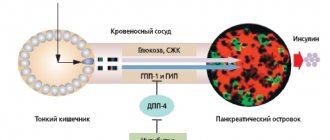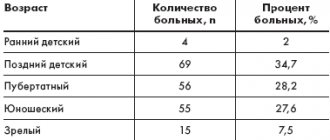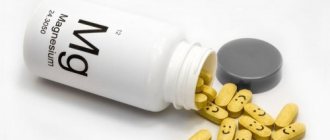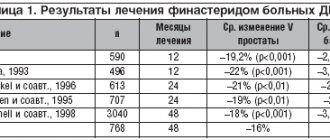Sildenafil-SZ tab 25mg N20 (Northern Star)
Sildenafil is a powerful selective inhibitor of cycloguanosine monophosphate (cGMP)-specific phosphodiesterase type 5 (PDE5). Mechanism of action The physiological mechanism of erection is associated with the release of nitric oxide (NO) in the corpus cavernosum during sexual stimulation. This, in turn, leads to an increase in cGMP levels, subsequent relaxation of the smooth muscle tissue of the corpus cavernosum and increased blood flow. Sildenafil does not have a direct relaxant effect on the isolated human corpus cavernosum, but enhances the effect of nitric oxide (NO) by inhibiting PDE5, which is responsible for the breakdown of cGMP. Sildenafil is selective for PDE5 in vitro, its activity against PDE5 exceeds that of other known phosphodiesterase isoenzymes: PDE6 - 10 times; PDE1 - more than 80 times; PDE2, PDE4, PDE7-PDE11 - more than 700 times. Sildenafil is 4000 times more selective for PDE5 compared to PDE3, which is of utmost importance since PDE3 is one of the key enzymes in the regulation of myocardial contractility. A prerequisite for the effectiveness of sildenafil is sexual stimulation. Clinical data Cardiac studies The use of sildenafil in doses up to 100 mg did not lead to clinically significant ECG changes in healthy volunteers. The maximum decrease in systolic pressure in the supine position after taking sildenafil at a dose of 100 mg was 8.3 mmHg. Art., and diastolic pressure - 5.3 mm Hg. Art. A more pronounced, but also transient effect on blood pressure was observed in patients taking nitrates. In a study of the hemodynamic effect of sildenafil at a single dose of 100 mg in 14 patients with severe coronary artery disease (more than 70% of patients had stenosis of at least one coronary artery), resting systolic and diastolic blood pressure decreased by 7% and 6%, accordingly, and pulmonary systolic pressure decreased by 9%. Sildenafil did not affect cardiac output or impair blood flow in stenotic coronary arteries, and also resulted in an increase (by approximately 13%) in adenosine-induced coronary flow in both stenotic and intact coronary arteries. In a double-blind, placebo-controlled study, 144 patients with erectile dysfunction and stable angina taking antianginal drugs (except nitrates) exercised until their angina symptoms improved. The duration of the exercise was significantly longer (19.9 seconds; 0.9-38.9 seconds) in patients taking sildenafil in a single dose of 100 mg compared to patients receiving placebo. A randomized, double-blind, placebo-controlled study examined the effect of varying the dose of sildenafil (up to 100 mg) in men (n=568) with erectile dysfunction and hypertension taking more than two antihypertensive medications. Sildenafil improved erections in 71% of men compared to 18% in the placebo group. The incidence of adverse effects was comparable to that in other patient groups, as well as in individuals taking more than three antihypertensive drugs. Studies of visual impairment In some patients, 1 hour after taking sildenafil at a dose of 100 mg, the Farnsworth-Munsell 100 test revealed a mild and transient impairment in the ability to distinguish shades of color (blue/green). 2 hours after taking the drug, these changes were absent. Color vision impairment is thought to be caused by inhibition of PDE6, which is involved in light transmission in the retina. Sildenafil had no effect on visual acuity, contrast perception, electroretinogram, intraocular pressure, or pupil diameter. In a placebo-controlled crossover study of patients with proven early-onset macular degeneration (n=9), sildenafil in a single dose of 100 mg was well tolerated. There were no clinically significant changes in vision assessed by specific visual tests (visual acuity, Amsler grating, color perception, color transmission simulation, Humphrey perimeter, and photostress). Efficacy The effectiveness and safety of sildenafil were assessed in 21 randomized, double-blind, placebo-controlled studies lasting up to 6 months in 3,000 patients aged 19 to 87 years with erectile dysfunction of various etiologies (organic, psychogenic or mixed). The effectiveness of the drug was assessed globally using an erection diary, the International Index of Erectile Function (a validated questionnaire about the state of sexual function) and a partner interview. The effectiveness of sildenafil, defined as the ability to achieve and maintain an erection sufficient for satisfactory sexual intercourse, has been demonstrated in all studies conducted and was confirmed in long-term studies lasting 1 year. In fixed-dose studies, the proportion of patients reporting that therapy improved their erections was: 62% (25 mg sildenafil dose), 74% (50 mg sildenafil dose), and 82% (100 mg sildenafil dose) compared with 25% in the placebo group. Analysis of the International Index of Erectile Function showed that in addition to improving erection, treatment with sildenafil also increased the quality of orgasm, achieved satisfaction from sexual intercourse and overall satisfaction. According to the pooled data, among patients who reported improved erections with sildenafil treatment, 59% of patients with diabetes, 43% of patients who had undergone radical prostatectomy, and 83% of patients with spinal cord injury (versus 16%, 15% and 12% in the placebo group, respectively).






